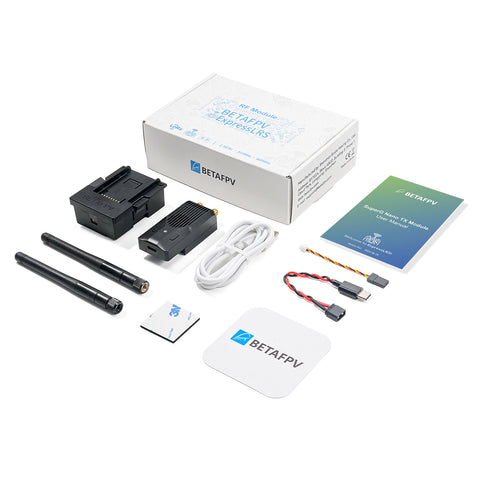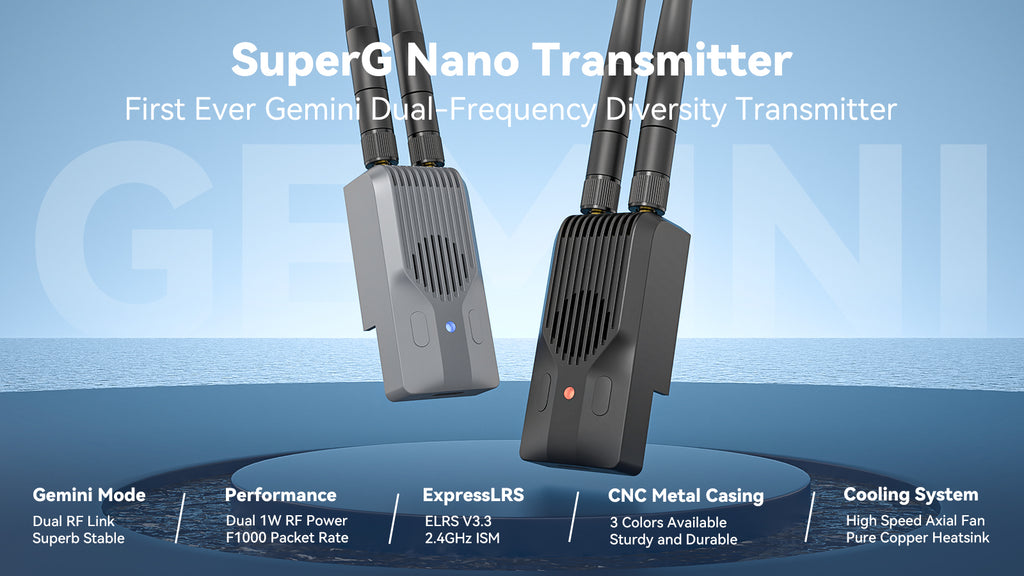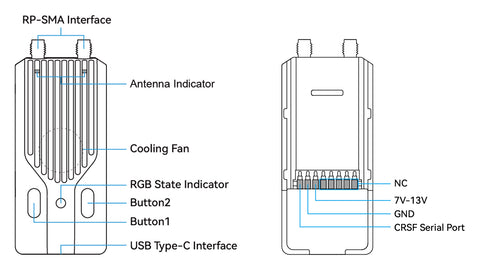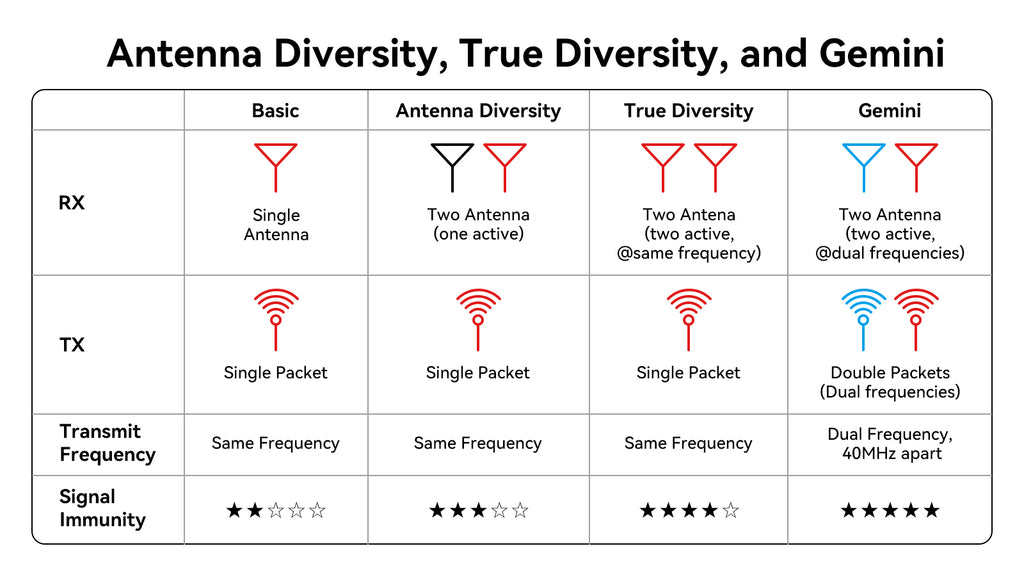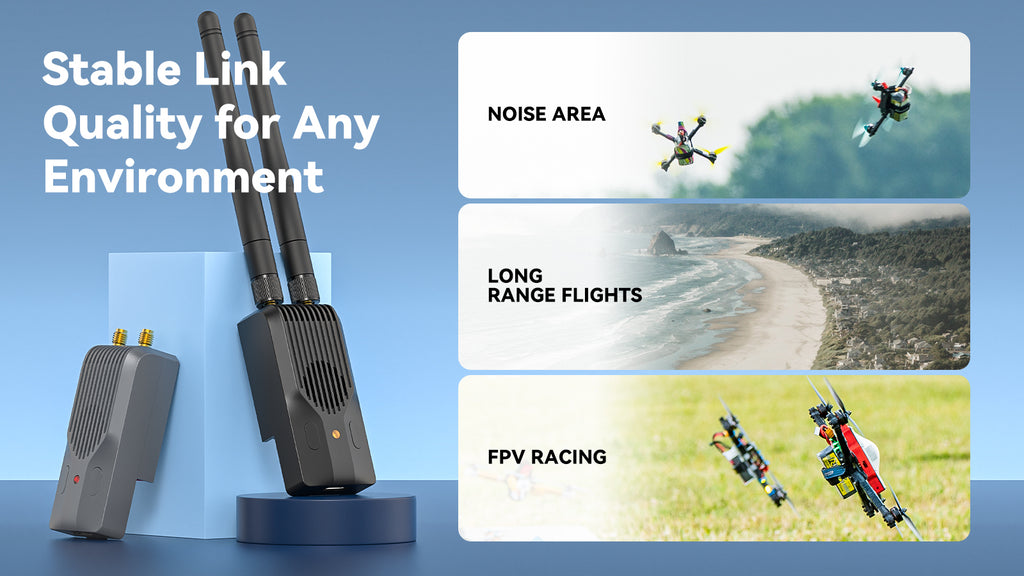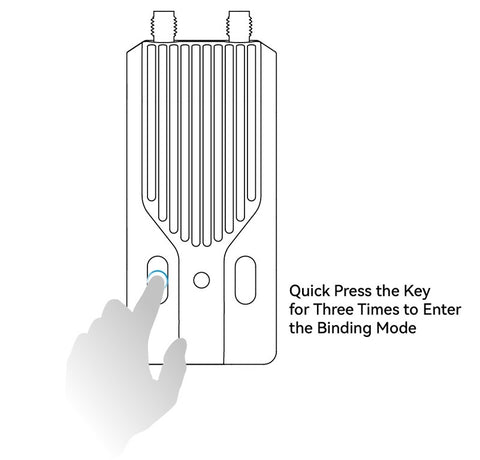BETA FPV Nano Transmitter SuperG
Based on ELRS V3.3 and in cooperation with ELRS developer team, the first Gemini transmitter with dual frequency diversity is released! At present, the SuperG Nano transmitter can be fully activated to achieve the best link quality ever combined with rx diversity as SuperD Receiver or Super P Receiver. With 1W dual transmit power, it excels in anti-interference performance and stability, making it ideal for demanding applications such as FPV racing, long-range flight and professional photography.
Characteristics
- Introducing the pioneering Gemini dual-frequency diversity transmitter, ushering ELRS into the era of dual-frequency capabilities.
- The 1W dual transmission power has been found to have amplified signal strength, extended transmission distances and substantially increased remote control range.
- When combined with existing True Diversity receivers, enabling Gemini mode ensures consistent signal stability even in the most complex radio environments.
- Meticulously crafted from CNC aluminum alloy, the transmitter casing facilitates efficient thermal conductivity, complemented by a cleverly designed heat sink system for optimal heat dissipation.
- Equipped with 2 customizable buttons and 1 USB port, the transmitter can accommodate external power sources, allowing for constant long-range expeditions.
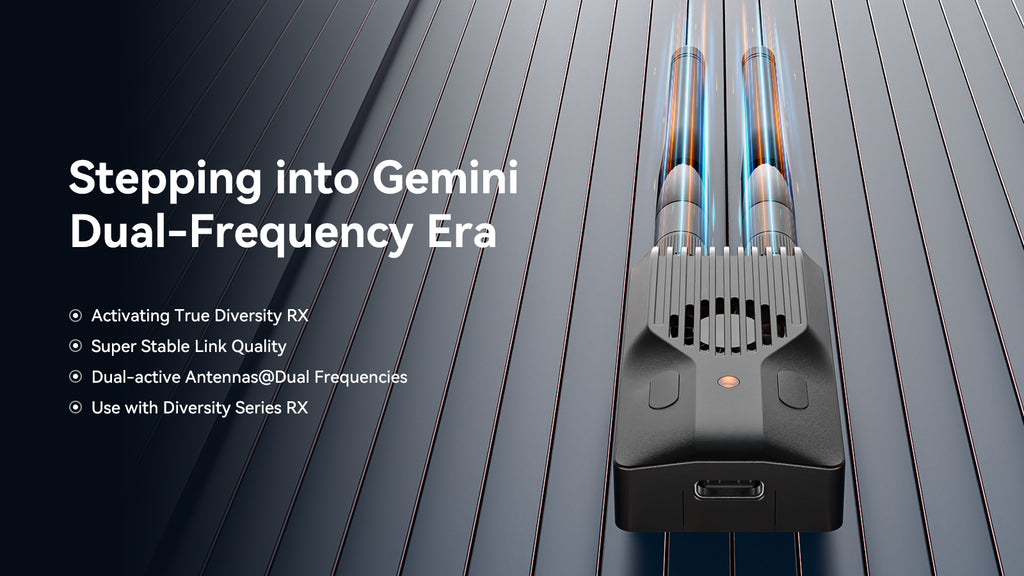
Technical specifications
- Item: BETAFPV SuperG Nano Transmitter Module | ELRS2.4G
- Weight: 44.8 g
- Color: Black, Red, Grey
- Antenna Connector: 2 * RP-SMA
- RF Power: 25mW/50mW/100mW/250mW/500mW/1000mW
- Packet rate: 50Hz/100Hz/150Hz/250Hz/333Hz/500Hz/D250/D500/F500/F1000
- Frequency band: 2.4GHz ISM
- Backpack: support
- Input voltage: 7V ~ 13V DC
- Rated Current: 8V, 1000mA to 1000mW, 1:128, Gemini Mode
- USB Port: Type-C
- Fan voltage: 5V
- Default firmware version: ExpressLRS V3.3.0
- Target Name: BETAFPV SuperG Nano 2.4GHz TX
Scheme
Below is the schematic of the SuperG Nano transmitter.
Note: Please mount the antenna before powering on. Otherwise, the PA chip in the SuperG Nano transmitter will be permanently damaged.
Below is the comparison information of the 3 products SuperG Nano Transmitter, ELRS Nano TX Module and ELRS Micro TX Module. It shows the upgrades and advanced specifications more than ever.
|
SuperG NanoTX |
NanoTX |
MicroTX |
| Maximum RF power |
Double 1000mW |
500mW |
500mW/1000mW |
| RF Chips |
Double SX128x |
Single SX128x |
Single SX128x |
| Antenna mode |
Twins |
Separate |
Separate |
| Cooling system |
Supported |
Not supported |
Supported |
| Backpack |
Supported |
Not supported |
Supported |
| External power supply |
Supported 7-13V |
Not supported |
Supported 5-12V |
- Antenna Diversity Mode, two antennas. Regularly switches between the two antennas to read the RSSI value of the signal and determine which antenna to use to receive the data.
- True Diversity mode, where both antennas receive data at the same frequency and the antenna that receives the correct data first is used.
- Gemini mode, where two antennas simultaneously receive telemetry data with a frequency difference of 40 MHz. They also transmit data simultaneously but at different frequencies. This means that the same data packets can be received on different frequencies and antennas. This mode provides stable flight even in complex radio environments.
Among them, Gemini is the most advanced function of ExpressLRS so far: Gemini mode currently! It has the most stable mode to receive signals and offers greater interference resistance and stability, making it suitable for various applications.
The SuperG Nano transmitter features Gemini mode. In a test video by developer Jye Smith , it is shown that with a refresh rate of 1000 Hz, the LQ value fluctuates between 90 and 100 when the True Diversity receiver is running. However, after switching to Gemini mode, the LQ value stabilizes at 99-100. This shows that ELRS does everything to ensure a stable link.
Combination with Diversity RX
Gemini mode is based on the hardware base of True Diversity receivers and requires a high-frequency module with dual RF output. When used with Super series products, you can fully utilize the advantages of Gemini mode. And the effects of using the transmitter and receiver in different modes are as follows:
|
Texas
|
RX
|
Antenna reception mode
|
| ANT1/ANT2/Switch
|
Separate
|
Separate
|
| Diversity
|
Diversity
|
| Twins
|
Separate
|
| Twins
|
Separate
|
Separate
|
| Diversity
|
Diversity
|
| Twins
|
Twins |
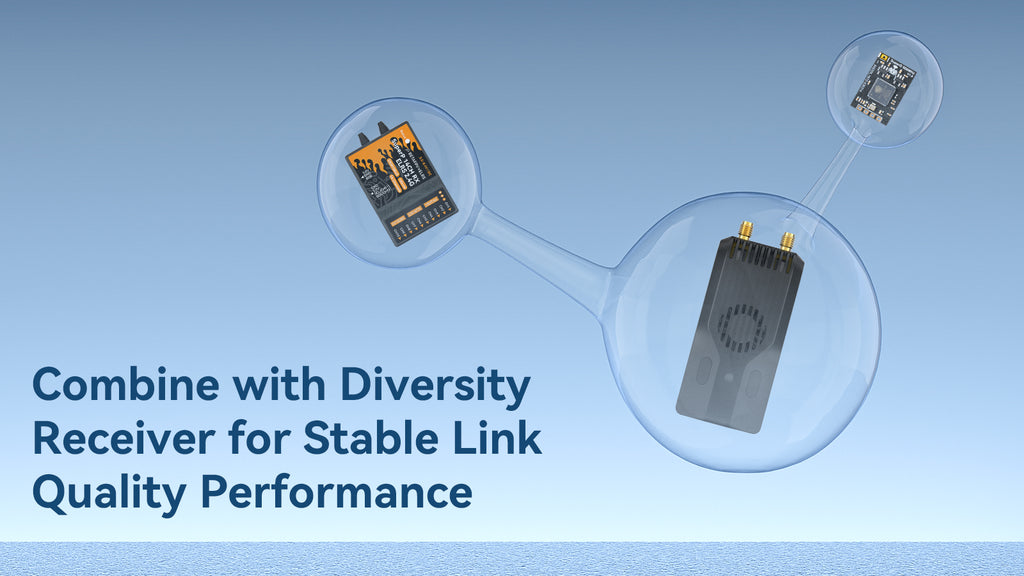
Using it in conjunction with the True Diversity receiver ensures a super stable yet strong radio link to allow pilots to fly in any environment that requires extremely stable signals and low latency. Including long-range flights, multiplayer flights and FPV racing. It offers pilots a robust and aggressive flight experience.
Double 1W output power
SuperG nano transmitter with dual frequency active antenna, each with a powerful 1W transmission power. Experience stronger signals, longer transmission distances and improved remote control range.
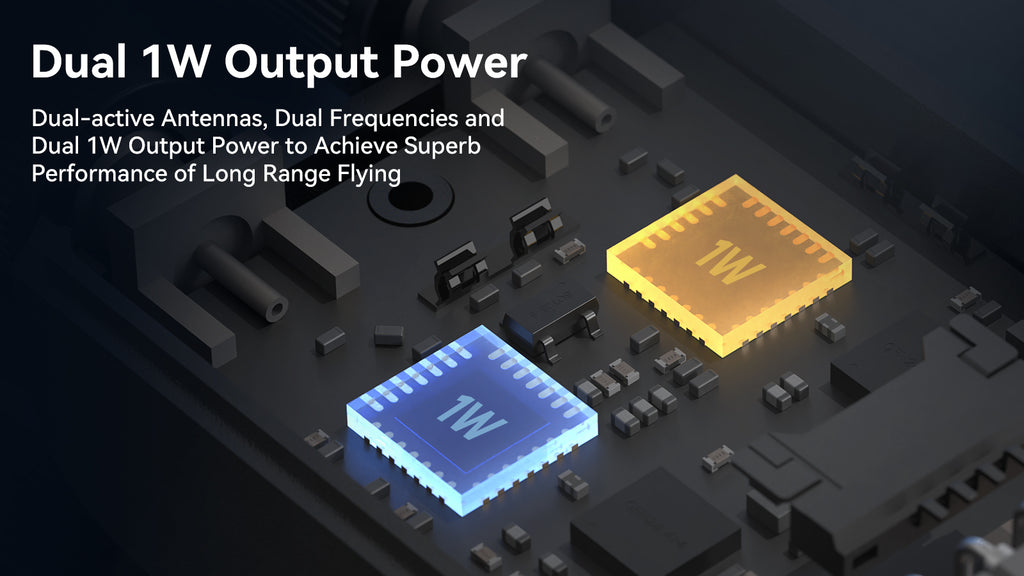
Cooling system iteration
The casing part is made of CNC aluminum alloy with anodized surface for durability. Effectively dissipate heat, thanks to the optimized internal airflow and high-speed fan with copper thermal fins. Fly with confidence and enjoy reliable performance every time.
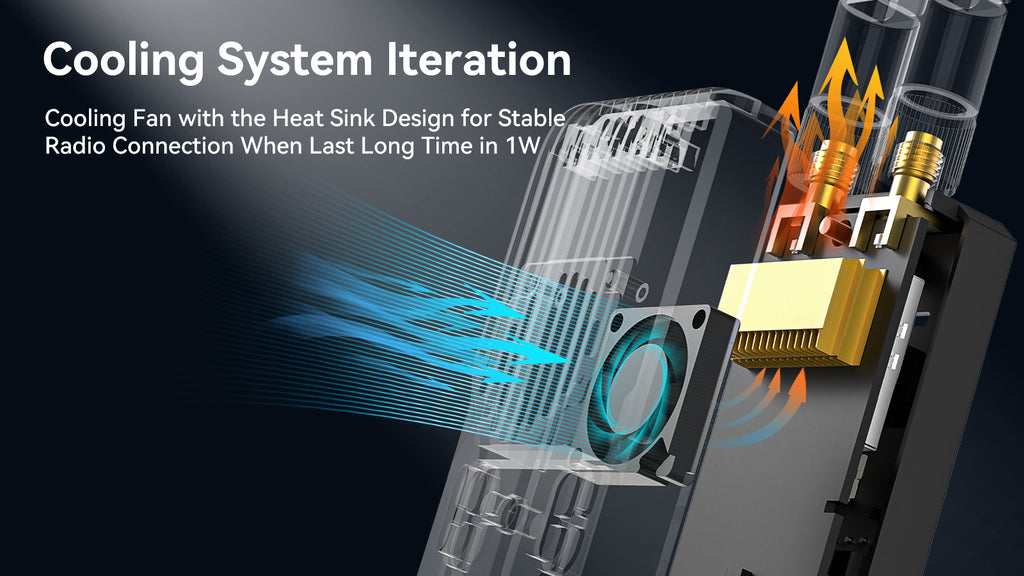
Combination with most TX radios
The SuperG Nano transmitter can be configured via LUA script. EdgeTX and OpenTX radio transmitters that support CRSF can be used easily. It is available for the popular Nano TX interface when used with Micro-Nano Module Adapter including Radiomaster TX16, Boxer, Zorro. Jumper T16, T20, T Pro. Frsky QX7, X9, X Lite.

Note: LiteRadio 3 Pro radio transmitter cannot support dual transmitter power more than 100mW due to power supply issues.
ELRS Series
The ExpressLRS series expands its range with the addition of the SuperG Nano transmitter. Pair the Gemini TX with Super Series Diversity receivers for exceptional link quality. BETAFPV takes the flight experience to new levels by introducing ELRS links that offer long range capabilities, low latency and high update rates in a radio control system.
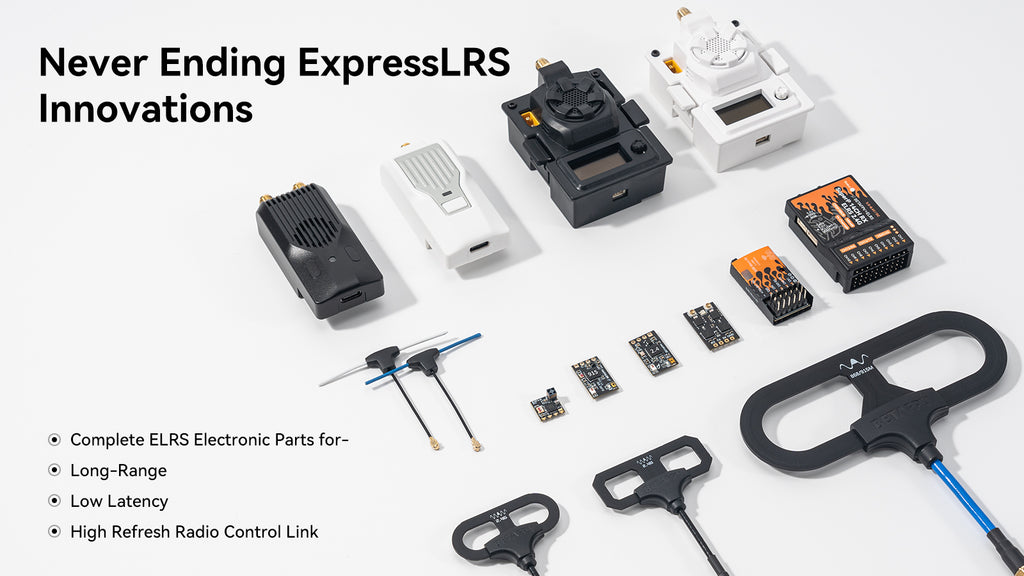
Basic configuration
The SuperG Nano transmitter is designed to receive signals using the Crossfire Serial Data Protocol (CRSF). Therefore, the transmitter's high-frequency module interface must support CRSF signal output. Taking the EdgeTX transmission system as an example, we will explain how to configure the transmitter to output CRSF signals and control the transmitter using Lua scripts.
In the EdgeTX system, go to MODEL SEL and enter the SETUP menu. Disable Internal RF (set to OFF), enable External RF and set the output mode to CRSF, as shown in the following image.
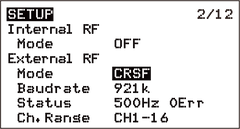
Lua scripting is a lightweight and compact scripting language that can be embedded into the transmitter for convenient access and modification of the transmitter configuration.
- Download the elrsV3.lua script from the BETAFPV Support Center or the ExpressLRS Configurator.
- Copy the official Lua script, elrsV3.lua, to the transmitter SD card, in the Scripts/Tools path.
- On the EdgeTX system, long press the SYS button or MENU button to enter the SD-HC CARD menu.
- In this menu, select the elrsV3.Lua script and run it.
- If the Lua script runs correctly, the interface will look like the following illustration.

Custom buttons
SuperG Nano Transmitter reserves 2 user-customizable buttons. Here are the specific steps to operate:
- Enable the transmitter's WiFi or turn it on and wait 60 seconds to enter WiFi mode using LUA programming.
- The RGB light will slowly flash green, indicating that the transmitter has automatically enabled WiFi (WiFi name: ExpressLRS TX, WiFi password: expresslrs).
- Connect your smartphone or computer to WiFi and open a web browser. Enter http://10.0.0.1 to access the custom button settings page.
- In the Action column of the corresponding button, select the desired custom function. Then, choose the button type and the number of presses or duration in the Pressure and Count columns. Click SAVE to complete the settings.
There are currently 6 functions that can be assigned to the shortcut buttons. There are 2 ways to use the buttons: long press and short press. You can customize the duration of a long press, while you can also customize the number of presses for a short press.
Below are the 6 functions that can be set:
| Unused |
VTX Setup |
| Increase output power |
Enable Wi-Fi |
| Enter VTX channel |
Enter binding mode |
| Enter VTX band |
|
The following images show the transmitter functionality in the factory default settings. (The left button is button 1 and the right button is button 2.)
| Button |
Action |
Press |
To count |
Button 1
(left button) |
Enter binding mode |
Short press |
3 times |
| Increase power |
Long press |
For 0.5 seconds |
Button 2
(right button) |
Go to VTX
Channel menu
|
Short press |
2 times |
| Send VTX settings |
Long press |
For 0.5 seconds |
Note: The transmitter hardware does not support RGB button lights.
Binding and external power supply
The SuperG Nano transmitter uses the default firmware, which uses the official ExpressLRS V3.3.0 protocol without a binding phrase. Therefore, the binding receiver must also be equipped with firmware V3.0.0 or higher and no binding phrase must be set. For optimal performance, it is recommended to place the two transmitter antennas as far apart as possible.
- Put the receiver into a paired state and wait for connection.
- Click "Bind" in the Lua script or the Set Custom button to enter binding mode.
- If the indicator has become solid, it indicates that the device has been paired successfully.
Note: If the TX firmware is reflashed and the binding phrase is configured, the binding state cannot be entered via the above method. Set RX to the same binding phrase as the frequency, and TX and RX can be connected automatically.
When the dual transmit power exceeds 500mW, the SuperG Nano transmitter has relatively high power consumption, resulting in reduced battery life. To extend the transmitter's use time, it is recommended to use an external battery as a power source.
- The power consumption of the transmitter is not only related to the transmission power but also to the telemetry ratio. When using a high power of 500mW and above, the return ratio can be set to a higher value to reduce power consumption and extend the use time.
- For example, in Gemini mode, the power consumption from setting the return ratio to 1:128 is 1000 mA, while the power consumption from setting the return ratio to 1:2 is only half of 1:128.
Note : When the battery voltage of the radio transmitter or external battery is lower than 7V(2S) or 10.5V(3S), please use the Gemini mode of 500mW and 1W carefully, otherwise the transmitter will enter the restart state due to insufficient power supply, resulting in uncontrolled disconnection.
FAQ
When establishing a connection, it is not possible to insert the LUA script.
- The ELRS LUA script version is obsolete and requires an update to elrsV3.lua.
- The baud rate of the radio transmitter is set below 400K and should be adjusted to a higher value.
- If you are unable to change the baud rate, you will need to update the radio transmitter firmware, ensuring that EdgeTX is at version V2.7.0 or later.
If the radio transmitter is unable to use the F1000 packet rate or displays the message "Transmission rate is too low".
- Reason: F1000 requires baud rate higher than 400K, and the baud rate of the radio transmitter is 400K by default.
- Solution: First update the baud rate setting (greater than 400K) in the hardware from the Model Setup menu or System menu, then reboot the radio transmitter to ensure the baud rate setting has been applied. Then change the packet rate.
When the F1000 is turned on, the packet rate between the radio transmitter and the SuperG Nano transmitter is less than 1000.
- Reason: Problem with EdgeTX version
- Solution: EdgeTX version needs to be updated to 2.8.0 or later. And LiteRadio 3 Pro radio transmitter is set to EdgeTX 2.8.0 and does not have this issue.
The default firmware of the SuperG Nano transmitter is ELRS V3.3.0, and users need to update the receiver to V3.0.0 or later to bind the frequency.
Package Included
- 1 * SuperG Nano Transmitter (Black)
- 2 * 2.4G glue stick antenna
- 1 * USB to Type-C Data Cable
- 1 * Type-C Male to XT30U Male Power Cable
- 1 * GH1.25 male to FUTABA male signal cable
- 1 * Micro-nano module adapter (standard version)
- 1 * Double sided EVA foam tape
- 1 * Instruction Manual
- 1 * Service card
